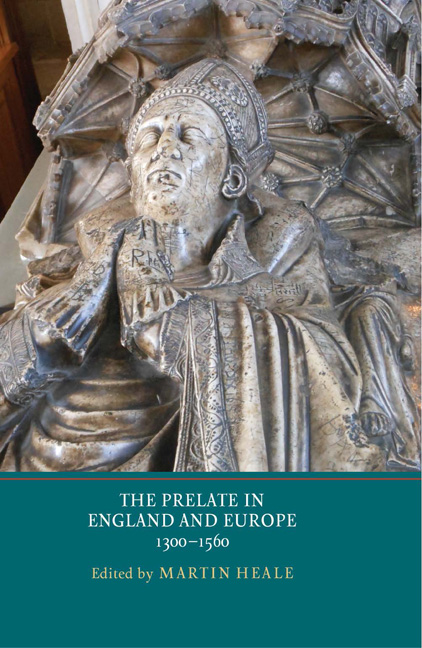Book contents
- Frontmatter
- CONTENTS
- List of Illustrations
- List of Contributors
- Preface and Acknowledgements
- List of Abbreviations
- Introduction
- Part I Prelates and Power
- The Clerical Chancellors of Late Medieval England
- Prelates and the Alien Priories
- Cardinals at the Court of Francis I
- Part II Patronage and Learning
- Part III Identity and Display
- Part IV Attitudes towards Prelacy
- Index of People and Places
- Index of Subjects
- YORK MEDIEVAL PRESS: PUBLICATIONS
Prelates and the Alien Priories
from Part I - Prelates and Power
Published online by Cambridge University Press: 05 November 2014
- Frontmatter
- CONTENTS
- List of Illustrations
- List of Contributors
- Preface and Acknowledgements
- List of Abbreviations
- Introduction
- Part I Prelates and Power
- The Clerical Chancellors of Late Medieval England
- Prelates and the Alien Priories
- Cardinals at the Court of Francis I
- Part II Patronage and Learning
- Part III Identity and Display
- Part IV Attitudes towards Prelacy
- Index of People and Places
- Index of Subjects
- YORK MEDIEVAL PRESS: PUBLICATIONS
Summary
The transformation of the alien priories in England in the decades around 1400 was largely driven by laymen. Kings, nobles and gentry, as well as aspiring middling sorts, responded to the permanent state of war with France by confiscating the properties of more than 125 cells and bailiwicks belonging to overseas abbeys, as well as naturalizing around thirty of the latter's larger dependencies. Broadly speaking, houses which were large enough to function as monasteries, ‘conventual’ houses, even if small ones, survived in Anglicized form, their French ‘alien’ monks replaced by English denizens, and their links with their mother-houses cut. Those small cells which could not support discernible monastic life, and the properties whose function was to export income to foreign abbeys, were confiscated and redistributed to old and new English ecclesiastical foundations. The episode is not the least important for what it reveals about lay attitudes to the Church about a century before the Reformation. But how did the clergy respond to this largely lay action to reform ecclesiastical institutions and redistribute the Church's property? Prelates were rarely able to take the initiative in this episode, but their actions and pronouncements are equally revealing, of perspectives within the Church itself and of the control exerted over it by the lay power.
- Type
- Chapter
- Information
- The Prelate in England and Europe, 1300–1560 , pp. 50 - 75Publisher: Boydell & BrewerPrint publication year: 2014

